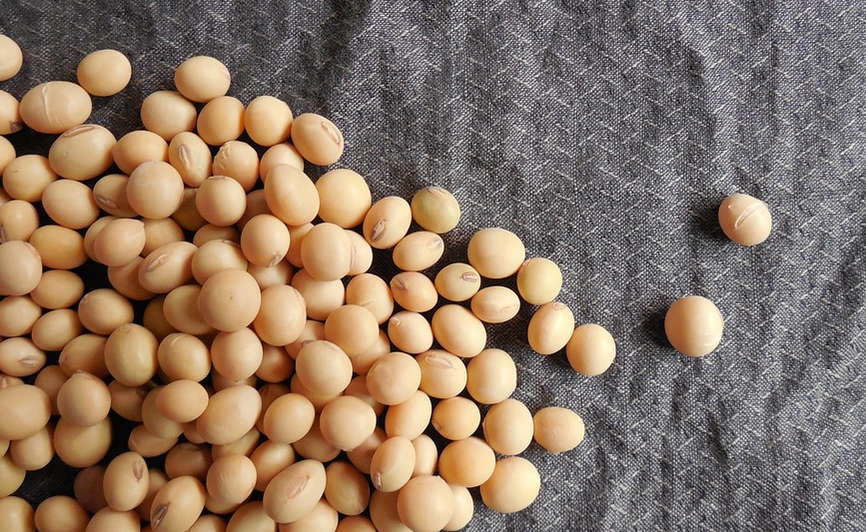Genetic dissimilarity between soybean genotypes cultivated in lowland irrigated inter-cropping
DOI:
https://doi.org/10.20873/jbb.uft.cemaf.v4n3.santosKeywords:
Glycine max, multivariate analysis, techniques groupingsAbstract
This study aimed to evaluate the genetic diversity among 18 soybean genotypes through multivariate techniques based on 17 agronomic and physiological characteristics. The experiment was carried in Formoso do Araguaia, Tocantins, in the inter-cropping of 2010. The experimental design was a randomized complete block with four plots. The Mahalanobis distance substantiate Tocher and UPGMA. The total chlorophyll, percentage of pods with two seeds, seed number per pod and chlorophyll a were the characteristics that contributed more to genetic diversity. The methods of groups formed four distinct groups and agreed among themselves, demonstrating the efficiency in detecting the similarity. Genotypes AH10-013 and AH10-006 were the most divergent and AH10-022 and AH10-023 the more similar. Are shown to generate populations in breeding programs inter population genotype AH10-013, AH10 and AH10-015-022 (Group I) with AH10-006 (Group IV) because they have higher productivity and be more divergent.
References
ABREU, F. B.; LEAL, N. R.; RODRIGUES, R.; AMARAL JR., A. T; SILVA, D. J. H. Divergência genética entre acessos de feijão-de-vagem de crescimento indeterminado. Horticultura Brasileira, v.22, n.3, p.547-552, 2004.
ALMEIDA, R. D.; PELUZIO, J. M.; FLÁVIO SÉRGIO AFFÉRRI, F. S. Divergência genética entre cultivares de soja, sob condições de várzea irrigada, no sul do Estado Tocantins. Revista Ciência Agronômica, v. 42, n. 1, p. 108-115, 2011.
BARROS, H. B.; SEDIYAMA, T.; MELO, A. V.; FIDELIS, R. R.; CAPONE, A. Adaptabilidade e estabilidade de genótipos de soja por meio de métodos uni e multivariado. Journal of Biotechnology and Biodiversity, v. 3, n. 2, p. 49-58, 2012.
CABRAL, P. D. S.; SOARES, T. C. B. S; LIMA, A. B. P.; ALVES, D. S.; NUNES, J. A. Diversidade genética de acessos de feijão comum por caracteres agronômicos. Revista Ciência Agronômica, v. 42, n. 4, p. 898-905, 2011.
COIMBRA, J. L. M.; CARVALHO, F. I. F. Divergência genética em feijão (Phaseolus vulgaris L.) com grão tipo carioca. Revista Brasileira de Agrociência, v.4, n.3, p. 211- 217, 1998.
CONDÉ, A. B. T.; COELHO, M. A. O.; FRONZA, V.; SOUZA, L. V. Divergência genética em trigo de sequeiro por meio de caracteres morfoagronômicos. Revista Ceres, v. 57, n; 6, p. 762-767, 2010.
CORREA, A. M.; GONÇALVES, M. C. Divergência genética em genótipos de feijão comum cultivados em Mato Grosso do Sul. Revista Ceres, v. 59, n. 2, p. 206- 212, 2012.
COSTA, M. M.; MAURO, A. O. D.; UNÊDA- TREVISOLI, S. H.; ARRIEL, N. H. C.; BÁRBARO, I. M.; MUNIZ, F. R. S. Ganho genético por diferentes critérios de seleção em populações segregantes de soja. Pesquisa Agropecuária Brasileira, Brasília, v.39, n.11, p.1095-1102, 2004.
CRUZ, C. D.; REGAZZI, A. J.; CARNEIRO, P. C. S. Modelos biométricos aplicados ao melhoramento genético. 3. ed. Viçosa: UFV, 2004. 480 p.
CRUZ C. D. Programa Genes: diversidade genética. Viçosa, UFV, 2008. 278 p.
ELIAS, T. H.; GONCALVES-VIDIGAL, M. C.; GONELA, A.; VOGT, G. A. Variabilidade genética em germoplasma tradicional de feijão-preto em Santa Catarina. Pesquisa Agropecuária Brasileira, v.42, n.10, p.1443-1449, 2007.
GUIMARAES, F. S.; REZENDE, P. M.; CASTRO, E. M.; CARVALHO, E. A.; ANDRADE, M. J. B.; CARVALHO, E. R. Cultivares de soja [Glycine max (L.) Merrill] para cultivo de verão na região de Lavras- MG. Ciência e agrotecnologia. v. 32, n. 4, p. 1099- 1106, 2008.
PELUZIO, J. M.; MELO, A. V.; COLOMBO, G. A.; AFFÉRRI, F. S.; SILVA, R. R.; RIBEIRO, G. R. S.; PIRES, L. P. M. Efeito das variações edafoclimáticas, da região Centro-Sul do estado do Tocantins, na produtividade de grãos de cultivares de soja. Pesquisa Aplicada e Agrotecnologia, v. 2, n.1, p. 43-54, 2009.
PELUZIO, J. M.; AFFÉRRI, F. S.; MONTEIRO, F. J. F.; MELO, A. V.; PIMENTA, R. S. Adaptabilidade e estabilidade de cultivares de soja em várzea irrigada no Tocantins. Revista Ciência Agronômica, v. 41, n. 3, p.427-434, 2010.
SANTOS, E. R.; BARROS, H. B.; FERRAZ, E. C.; CELLA, A. J. S.; CAPONE, C.; SANTOS, A. F.; FIDELIS, R. R. Divergência entre genótipos de soja, cultivados em várzea irrigada. Revista Ceres, v. 58, n. 6, p. 755-764, 2011.
SEDIYAMA, T.; Tecnologia de produção da soja. Editora Mecenas LTDA. Londrina – Paraná, Brasil, 2009.
SEPLAN. Secretaria do Planejamento e Meio Ambiente. Atlas do Tocantins: subsídios ao planejamento da gestão territorial. 3. ed. Palmas: SEPLAN, 2003. 49 p.
SINGH, D. The relative importance of characters affecting genetic divergence. The Indian Journal of Genetic and Plant Breeding, v. 41, n. 2, p. 237-245, 1981.
SMALING, E. M. A.; ROSCOE R. C.; LESSCHEN, J. P.; BOUWMANE, A. F.; COMUNELLO, E. From forest to waste: Assessment of the Brazilian soybean chain, using nitrogen as a marker. Agriculture, Ecosystems and Environment. V. 128, n. 3, p. 185–197, 2008.

Published
How to Cite
Issue
Section
License
Copyright (c) 2024 - Journal of Biotechnology and Biodiversity

This work is licensed under a Creative Commons Attribution 4.0 International License.
Authors who publish with this journal agree to the following terms:
Authors retain copyright and grant the journal right of first publication with the work simultaneously licensed under a Creative Commons Attribution License (CC BY 4.0 at http://creativecommons.org/licenses/by/4.0/) that allows others to share the work with an acknowledgement of the work's authorship and initial publication in this journal.
Authors are able to enter into separate, additional contractual arrangements for the non-exclusive distribution of the journal's published version of the work (e.g., post it to an institutional repository or publish it in a book), with an acknowledgement of its initial publication in this journal.
Authors are permitted and encouraged to post their work online (e.g. in institutional repositories or on their website) prior to and during the submission process, as it can lead to productive exchanges, as well as earlier and greater citation of published work (Available at The Effect of Open Access, at http://opcit.eprints.org/oacitation-biblio.html).


